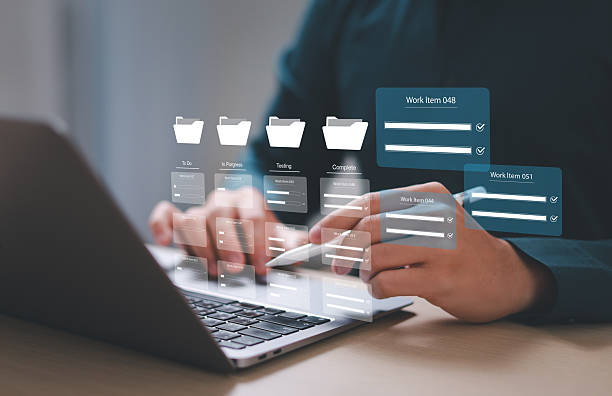The Importance of On-Page SEO and its Place in Search Engine Optimization
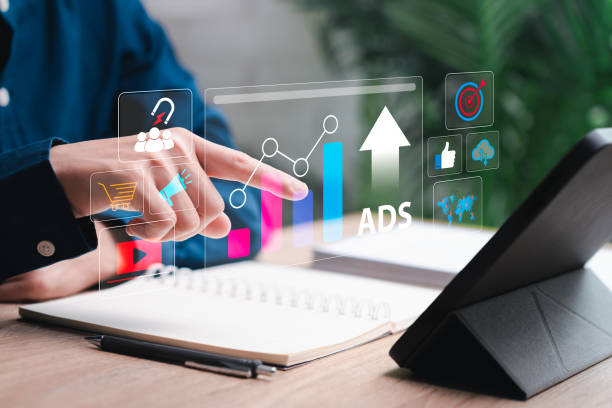
#On_Page_SEO or #In_Page_Optimization, is a set of actions and techniques performed within your website to improve its ranking in search engine results like Google.
This process is vital because search engines understand and evaluate your content through these internal signals.
Without proper on-page SEO, even the best content might be overlooked.
On-page SEO helps search engines correctly identify the website structure, the relationship between pages, and the main topic of each page.
This deep understanding is the primary basis for displaying your site in relevant searches.
In contrast, off-page SEO refers to activities performed outside your website, such as link-building from other sites.
On-page SEO and off-page SEO complement each other, and both must be implemented in parallel to achieve the best results.
The importance of on-page SEO is not limited to ranking; this process also improves user experience (UX), which is itself one of Google’s important ranking factors.
A website with strong on-page SEO has easier navigation, loads faster, and its content is easily accessible and understandable.
This comprehensive explanation serves as a foundation for a deeper understanding of on-page SEO and helps you start your site’s ranking improvement journey with an educational approach.
In other words, on-page SEO is considered the backbone of any successful SEO strategy, and without it, your efforts to be seen on the web will not bear fruit.
Did you know 85% of customers check your company’s website before any interaction?
With Rasavv, build a corporate website worthy of your reputation.
✅ Increase customer credibility and trust
✅ Attract high-quality leads
⚡ Get free website design consultation
Keyword Research: An Essential Part of On-Page SEO
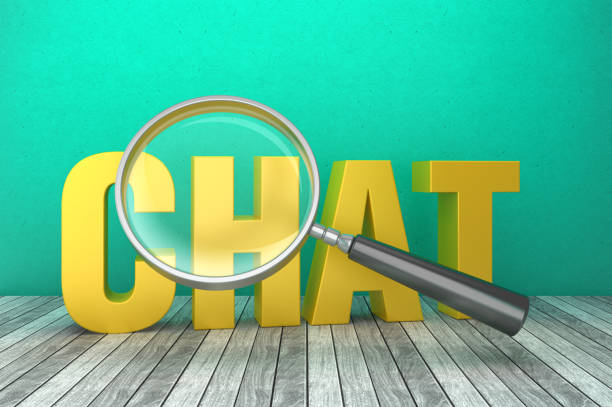
#Keyword_Research, as the backbone of any successful on-page SEO strategy, is the process of identifying phrases and words that your target audience uses in search engines to find information, products, or services related to your business.
This initial and vital step helps you create content that precisely matches user needs and search intent.
Choosing the right keywords not only directs more traffic to your website but also attracts high-quality, relevant traffic that is more likely to convert into customers or loyal visitors.
At this stage, you should look for keywords with a good search volume that are not overly competitive to increase your chances of ranking.
Also, distinguishing between short-tail keywords and long-tail keywords is important.
Short-tail keywords are more general and have higher search volume but also higher competition, while long-tail keywords are more specific and have lower search volume but clearer user intent and offer higher conversion rates.
Various tools like Google Keyword Planner, Ahrefs, Semrush, and even Google’s own search suggestions can be excellent guidance in this process.
By analyzing competitor keywords and top-performing content in your field, you can find new keyword ideas.
This educational and analytical stage will be the foundation for structuring and producing optimized content for your on-page SEO.
Content Optimization: A Key Step in On-Page SEO

#High_Quality_Content is not only appealing to users but also highly valuable for search engines and plays a primary role in on-page SEO.
After keyword research, it’s time to apply them in content and optimize on-page elements.
This specialized stage includes optimizing the Title Tag, Meta Description, Heading Tags (H1-H6), Image Alt Text, and the content text itself.
The title tag is the most important on-page SEO element displayed in search results and should include the main keyword and be engaging to encourage users to click.
Although meta descriptions do not directly impact rankings, they influence your click-through rate (CTR) and should provide an appealing summary of the content.
Proper use of heading tags structures your content and improves its readability for both users and search engines.
On-page SEO also requires the natural use of keywords throughout the content text, without overdoing it, which can lead to “Keyword Stuffing” and result in penalties from Google.
| Type | Title Tag | Meta Description |
|---|---|---|
| Good Example | Comprehensive On-Page SEO Guide 2024: Improve Your Site Ranking | Learn on-page optimization techniques with this complete on-page SEO guide and boost your website’s ranking on Google. |
| Bad Example | SEO, On-page SEO, Website Optimization, Site Ranking, Web SEO | Best on-page SEO. On-page SEO. SEO tutorial. Cheap on-page SEO. Website on-page SEO. SEO. |
Furthermore, optimizing images by using Alt text tags (image descriptions) and compressing them to increase loading speed are other important aspects of content optimization in on-page SEO.
The ultimate goal is to produce content that not only provides valuable information to the user but is also easily understandable and indexable for search bots.
URL Structure and Information Architecture: A Solid Foundation for On-Page SEO
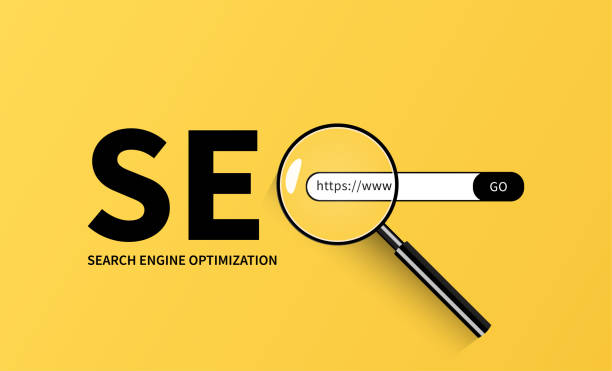
#URL_Structure and #Site_Architecture are two vital elements that play a fundamental role in understanding and navigating a website for both search engines and users.
An optimized URL is short, descriptive, and includes relevant keywords.
Avoiding long and complex URLs with obscure characters is an important part of on-page SEO.
Readable URLs not only help users anticipate page content but also assist search engines in understanding the page’s topic.
For example, `yourwebsite.com/on-page-seo-guide` is much better than `yourwebsite.com/p?id=12345`.
Website information architecture refers to how pages and content are organized and arranged.
A logical and clear hierarchical structure, like a tree branching from the homepage to categories and then to more specific pages, is ideal for on-page SEO.
This structure not only helps search bots discover and index all your pages but also makes site navigation easier for users.
Using Breadcrumbs at the top of pages is an excellent explanatory method for showing the user’s current position in the site hierarchy and also helping search engines understand the site structure.
Additionally, an XML Sitemap is an essential file that provides search engines with a list of all indexable pages on your website, helping them ensure no page is overlooked.
Using Canonical URLs is also crucial to prevent duplicate content issues.
This URL tells the search engine which version of a page (if multiple URLs exist for the same content) is the original and authoritative one.
In summary, a clean URL structure and a logical information architecture lay a solid foundation for a successful on-page SEO strategy.
Does your current website convert visitors into customers or scare them away? Solve this problem forever with professional corporate website design by Rasavv!
✅ Build strong credibility and branding
✅ Attract target customers and increase sales
⚡ Get a free consultation right now!
Site Loading Speed and User Experience in On-Page SEO

#Site_Speed and #User_Experience (UX) are two vital factors that directly impact your search engine ranking and the overall success of your on-page SEO.
Google has repeatedly emphasized that page loading speed is an important ranking factor, as slow websites provide a poor user experience.
Today’s users are impatient and expect web pages to load in a fraction of a second; otherwise, they often leave the website and go to your competitors.
This not only increases the Bounce Rate but also sends negative signals to search engines that your content is not engaging or useful enough.
Core Web Vitals, a set of metrics related to website speed, interactivity, and visual stability, introduced by Google, are key indicators for evaluating user experience and play a crucial role in on-page SEO.
These metrics include LCP (Largest Contentful Paint) for loading speed, FID (First Input Delay) for interactivity, and CLS (Cumulative Layout Shift) for visual stability.
To improve site speed and consequently Core Web Vitals, you can take actions such as optimizing images (compressing and using next-gen formats), browser and server caching, compressing CSS and JavaScript files, and using a Content Delivery Network (CDN).
Continuous analysis of site performance with tools like Google PageSpeed Insights and Google Search Console provides valuable analytical insights for identifying weaknesses and continuously improving on-page SEO.
Internal Linking and Website Navigation Improvement
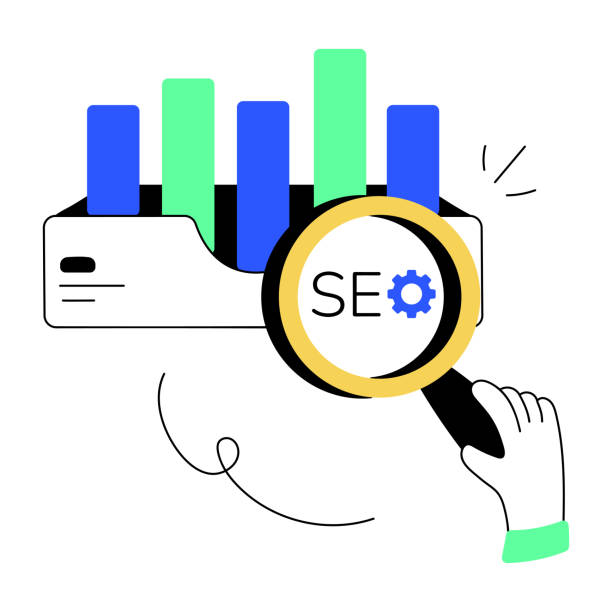
#Internal_Linking is one of the most powerful yet often overlooked aspects of on-page SEO that can significantly impact your website’s ranking and page discoverability.
Internal links establish connections between different pages within a website and help search engines better understand your site’s structure and hierarchy.
These links also distribute “Link Equity” throughout your website, meaning pages that receive more internal links from authoritative pages are likely to achieve higher rankings in search results.
For example, if a highly authoritative page (such as the homepage or a popular blog post) links to other pages, it passes a portion of its authority to those pages.
Using descriptive and relevant Anchor Text, which includes target keywords for the destination page, is very important.
Instead of using generic phrases like “Click here,” use phrases like “On-Page SEO Guide” that provide useful information about the destination page’s content for both the user and the search engine.
Linking to related posts, creating tables of contents in long articles, and even linking to categories and tags all help improve site navigation and increase content discoverability.
A strong internal_linking strategy not only makes users spend more time on your site (reducing bounce rate) but also signals to search engines that your content is rich and interconnected.
This is a key guidance for comprehensive on-page SEO improvement and helps your site be recognized as an authoritative and organized information source.
Image and Video SEO in On-Page SEO

#Image_Optimization and #Video_Optimization are integral parts of a comprehensive on-page SEO strategy that are often overlooked.
In today’s world, where visual content plays a crucial role in user engagement and message delivery, ensuring that your images and videos are understandable to search engines is essential.
Image optimization involves several key aspects: The first is compressing the image file size without noticeable loss of quality.
Large images can significantly reduce site loading speed, which, as previously mentioned, is an important ranking factor.
Using optimized formats like WebP instead of JPG or PNG, where possible, can help with this.
| Action | Description | Importance in On-Page SEO |
|---|---|---|
| Compression | Reducing image file size without noticeable quality loss. | Increasing page loading speed, improving user experience. |
| File Naming | Using descriptive names that include keywords (example: on-page-seo-image.jpg). | Helping search engines understand image content. |
| Alt Text Tag | Providing text descriptions for images (example: “on-page SEO strategy chart”). | Essential for accessibility, search engine understanding, and ranking in image search. |
| Correct Dimensions | Using dimensions appropriate for web display, without resizing with CSS. | Preventing layout shifts (CLS) and increasing loading speed. |
| Linking to Images | If necessary, linking images to original sources or related pages. | Improving navigation and passing link equity. |
The second is the use of Alt text (Alternative Text) tags.
This tag is important for describing image content to search engines and also for users who, for various reasons (such as slow internet or visual impairments), cannot see the image.
The Alt tag should include relevant and descriptive keywords.
Optimizing the image file name is also important; descriptive names like `on-page-seo-chart.jpg` are better than `IMG_001.jpg`.
For videos, in addition to compression and using suitable hosting (like YouTube or Vimeo), creating a Video Sitemap and using Schema Markup for video can help search engines better understand and index your video content.
Also, providing transcripts or subtitles for videos not only aids accessibility but also offers more text for search engines to analyze your video content.
This specialized approach to visual optimization is a vital component of on-page SEO and helps your content be seen even more.
Question-Driven Content and Its Connection to User Needs
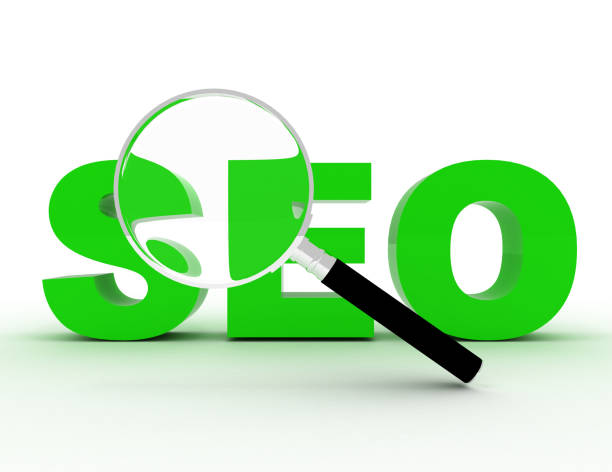
#Question_Driven_Content refers to creating content that directly answers users’ questions, concerns, and needs.
This type of content is a powerful approach in on-page SEO strategy because it aligns with the main goal of search engines (i.e., providing the best answers to user queries).
Today, a significant portion of Google searches are phrased as questions, such as “How to do on-page SEO?“ or “What is the best SEO tool?” By identifying these questions and producing content that comprehensively and accurately answers them, you can attract more targeted organic traffic.
This strategy positions you as a credible and reliable source in your field.
To create question-driven content, you can use keyword research tools to find common questions related to your industry, or check the “People Also Ask” section in Google search results.
Creating FAQ sections on product pages or articles is an excellent way to answer these questions and increase your chances of appearing in Rich Snippets, which can significantly boost your click-through rate (CTR).
Question-driven content not only helps improve your ranking but also naturally increases user dwell time on the site and reduces bounce rate, as users find what they are looking for.
This analytical and user-centric approach is a vital aspect of on-page SEO that will directly benefit user experience and ultimately your site’s overall success.
Are you dissatisfied with your e-commerce site’s low sales?
Rasavv is your solution for having a professional and high-selling e-commerce website.
✅ Significant increase in sales and revenue
✅ Easy and enjoyable shopping experience for customers
⚡ Get a free consultation from Rasavv right now!
Continuous Updates and Maintenance to Maintain Position in On-Page SEO
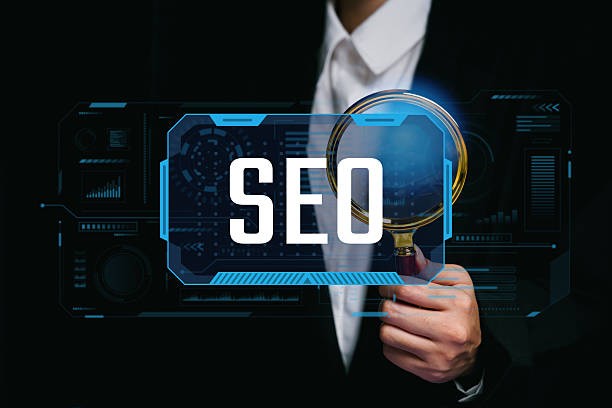
#Content_Update and #On_Page_SEO_Monitoring are continuous and vital processes, not a one-time task.
The world of SEO is rapidly changing, and Google’s algorithms are constantly updated.
Content that ranks first today might lose its position tomorrow due to the emergence of new competitors, changes in user needs, or algorithm updates.
Therefore, regular maintenance and updates of content and technical aspects of on-page SEO are essential to preserve and improve your site’s ranking.
One of the most important things you should do is continuously review old content and update it with new information, fresh statistics, and relevant keywords.
This can include adding new sections, removing outdated information, and improving the overall content structure.
This process is also known as “Content Refresh” and sends a positive signal to search engines that your content remains fresh and relevant.
In addition to content, monitoring Broken Links, re-optimizing images if necessary, and checking for technical issues (such as crawl errors) in tools like Google Search Console are also of high importance.
Monitoring news and updates related to the SEO industry and Google’s algorithms helps you adjust your on-page SEO strategy in line with market changes.
This continuous maintenance ensures that your initial on-page SEO efforts are not wasted and your website always remains at its peak performance.
In other words, on-page SEO is a long-term journey that requires continuous attention and care to yield stable and successful results.
Advanced Tools and Techniques in On-Page SEO

#SEO_Tools and #Advanced_Techniques play an important role in enhancing on-page SEO and achieving better results.
After covering the basics, it’s time to take a deeper look at tools and methods that can help you identify opportunities and solve more complex problems.
Google Search Console is a free and essential tool provided by Google itself, offering vital information on how your website is seen in search results.
This tool helps you check crawl errors, indexing issues, keyword performance, and even inbound links.
Analytical use of Search Console data can assist you in strategic decision-making for on-page SEO.
Paid tools like Ahrefs, Semrush, and Moz also offer much more advanced capabilities for keyword research, competitor analysis, backlink checking, and site auditing.
These tools can be very effective in uncovering hidden opportunities and identifying technical weaknesses in your on-page SEO.
One of the advanced and highly effective techniques in on-page SEO is the use of Structured Data and Schema Markup.
These codes help search engines understand your content and display it in a richer, more engaging way in search results (such as Rich Snippets for recipes, customer reviews, or events).
Correct implementation of Schema Markup can significantly increase your click-through rate and differentiate your website from competitors.
Exploring and utilizing these engaging and specialized tools and techniques allows you to lead in the SEO competition and optimize your site for the highest rankings.
Frequently Asked Questions
| Question | Answer |
|---|---|
| What is On-Page SEO? | It refers to the set of actions performed within a website to improve its ranking in search engines. |
| Why is On-Page SEO important? | Because it helps search engines better understand your site’s content and structure, and improves user experience. |
| What are the most important elements of On-Page SEO? | Title and meta descriptions, keywords, URL structure, quality content, image optimization, internal linking, and site speed. |
| How to optimize Title Tag and Meta Description? | The title should include the main keyword and be engaging, and the meta description should be a compelling summary of the content with relevant keywords. |
| What is the role of keywords in On-Page SEO? | Keywords tell search engines what the page content is about and should be used naturally and intelligently within the text. |
| How is image optimization done for On-Page SEO? | By compressing size, using descriptive file names, and filling the Alt tag with relevant descriptions and keywords. |
| What is Internal Linking and what is its use? | It is the connection of different pages within a site. This helps distribute Page Authority and improve search engine crawling. |
| What is the importance of site loading speed in On-Page SEO? | High speed improves user experience and is an important ranking factor for search engines like Google. |
| What impact does site responsiveness (Mobile-Friendliness) have on On-Page SEO? | Given the increase in mobile users, responsiveness is essential for providing a suitable user experience on all devices and for Google’s mobile-first indexing. |
| What are the important content-related factors in On-Page SEO? | Originality, quality, comprehensiveness, readability, proper use of headings (H1, H2,…), and regular content updates. |
And other advertising agency services by Rasavv in the field of advertising
Smart Advertising Campaign: A combination of creativity and technology to attract customers through intelligent data analysis.
Smart Social Media: An effective tool for online growth with precise audience targeting.
Smart Brand Identity: A combination of creativity and technology to increase sales through precise audience targeting.
Smart Digital Branding: Designed for businesses seeking campaign management through optimizing key pages.
Smart Social Media: A specialized service for growth and increasing sales based on SEO-driven content strategy.
And over hundreds of other services in the field of internet advertising, advertising consultation, and organizational solutions
Internet Advertising | Advertising Strategy | Advertorial
Sources
Moz’s Internal Link Building Guide
Internal Linking from Search Engine Journal’s Perspective
Ahrefs’ Internal Linking Tutorial
SEO on Farsi Wikipedia
? Is your business ready to leap into the digital future? Rasavv Afarin Digital Marketing Agency, by offering comprehensive services including website design with a modern user interface, SEO, and social media management, paves your path to success. Contact us today and transform your brand’s future.
📍 Tehran, Mirdamad Street, next to Bank Markazi, South Kazeroun Alley, Ramin Alley, No. 6

